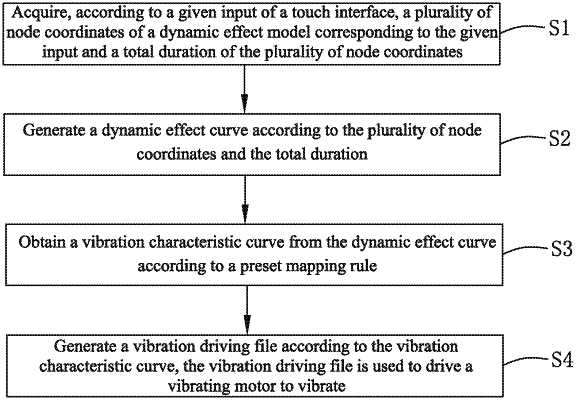| CPC G06F 3/016 (2013.01) [G06F 3/04886 (2013.01); G06F 2203/04803 (2013.01); H04M 1/72427 (2021.01)] | 8 Claims |

|
1. A method for driving vibration based on micro-touch, comprising following steps:
acquiring, according to a given input of a touch interface, a plurality of node coordinates of a dynamic effect model corresponding to the given input and a total duration of the plurality of node coordinates;
generating a dynamic effect curve according to the plurality of node coordinates and the total duration;
wherein the generating a dynamic effect curve according to the plurality of node coordinates and the total duration specifically comprises following sub-steps:
generating, according to the plurality of node coordinates Pn=(xn, yn) and the total duration, dynamic effect curve trajectory coordinates corresponding to a time t, and obtaining a dynamic effect curve trajectory according to the dynamic effect curve trajectory coordinates, where n is a positive integer greater than 1; and
performing first-order derivation on the dynamic effect curve trajectory to obtain x-direction velocities and y-direction velocities, so as to obtain the time t of the dynamic effect curve trajectory and an x-direction velocity Xvel(t) and the y-direction velocity Yvel(t) of the curve trajectory corresponding to the time t;
obtaining a vibration characteristic curve from the dynamic effect curve according to a preset mapping rule; wherein the vibration characteristic curve comprises a vibration time-frequency curve generated based on one of Xvel(t) and Yvel(t) and a vibration time-intensity curve generated based on another one of Xvel(t) and Yvel(t);
generating a vibration driving file according to the vibration characteristic curve, wherein the vibration driving file is configured to drive a vibrating motor to vibrate.
|